Books and Edited Books by Yvonne Low
Awesome Art Indonesia, 2020
Awesome Art Indonesia: 10 works from the archipelago everyone should know (Children’s Series) Sin... more Awesome Art Indonesia: 10 works from the archipelago everyone should know (Children’s Series) Singapore: National Gallery Singapore, 2020
Chapter in Books by Yvonne Low
Iconic Works by Feminists and Gender Activists: Mistress-Pieces, 2021
“Phaptawan Suwannakudt’s Akojorn (1995): Connecting Women”, Iconic Works by Feminists and Gender ... more “Phaptawan Suwannakudt’s Akojorn (1995): Connecting Women”, Iconic Works by Feminists and Gender Activists: Mistress-Pieces, ed. Brenda Schmahmann (Routledge: New York), 2021, 223-235.
Book Chapter. "A "Forgotten" Art World: The Singapore Art Club and its Colonial Women Artists" in... more Book Chapter. "A "Forgotten" Art World: The Singapore Art Club and its Colonial Women Artists" in Charting Thoughts: Essays on Art in Southeast Asia, ed by Low Size Wee & Patrick Flores (Singapore: National Gallery Singapore, 2017) 104-119.
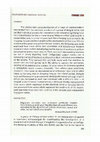
Book Chapter. ‘Remembering Nanyang Feng ge’ in ed. Majella Munro, Modern Art Asia Issues 1-8, (UK... more Book Chapter. ‘Remembering Nanyang Feng ge’ in ed. Majella Munro, Modern Art Asia Issues 1-8, (UK: Enzoarts, 2012)
The problematic conceptualisation of a range of representations interpreted from the aesthetic practices of a group of emigre artists led their individual pursuits for innovation to be viewed as signifying hope for a consolidated identity in the emerging 'Malayan nation' and hope for a consolidated artistic school of painting in the emerging local art world. Their efforts were collectively viewed in most cases as representative of a Malayan style and at other times, as Nanyang style or Nanyang Feng'ge. Fundamentally, a Malayan identity was perceived from works which expressed multiculturalism while a Nanyang identity was perceived from works which expressed the sentiments of the tropics. Both identities have since lost currency in the present post-Independent Singapore nation.
Feminism and Museums: Intervention, Disruption and Change, Volume 2
[Book chapter] ‘Recovering Women’s Subjectivities: Siti Ruliyati and the “private” transformatio... more [Book chapter] ‘Recovering Women’s Subjectivities: Siti Ruliyati and the “private” transformations of Academic Realism’, in ed. Jenna Ashton, Feminism and Museums: Intervention, Disruption and Change, Volume 2 (Boston: MuseumsEtc, 2018) 210-245.
Peer-reviewed Journal Essays by Yvonne Low
World Art, 2024
This essay examines the problematic 'primitivist' positions adopted by the artist and viewer when... more This essay examines the problematic 'primitivist' positions adopted by the artist and viewer when engaging with the 'Nanyang art' of Singapore's preeminent pioneering artist, Liu Kang (b. 1911-2004). In this re-evaluation of the artist's modernist pursuit, I argue that Liu Kang's experience of Balia place uniquely distanced from the cultural politics of mainland China and with access to nude models provided the fertile conditions for the mastery and syncretising of artistic techniques in the formulation of modern Nanyang landscapes, which the artist later defined as Nanyang feng'ge (trans. Nanyang style). Subsequent politicisation of the Nanyang Style/ Nanyang Art has overshadowed the more significant localisation of an exogenous picture category, 'female nudes'.
Open access: https://www.tandfonline.com/doi/full/10.1080/21500894.2024.2340070

This case study on Singapore’s Contemporary Art highlights a global condition for nations competi... more This case study on Singapore’s Contemporary Art highlights a global condition for nations competing for a place in the present international art world of Biennials and Triennials. By tracing the development of Contemporary Art in Singapore beginning from 1970 to the present moment, this paper shows how Contemporary Art is a local response to a global phenomenon, and in particular, to economic globalization such that the State now plays the roles as both patron and mediator. Its development cannot be viewed as separate from a global phenomenon nor from a local one for it is on one hand circumscribed by global aesthetic trends and on the other by local socio-economic developments. Its consecration also took place in tandem with the State’s effort to develop a global arts industry such that it is difficult to map a local stylistic discourse without reference to a global context. As such, this overlapping of the local Art World with the local/global Art Industry had reconstituted the need to position ‘art’ as cultural products. ‘Identity’, then, became its accompanying market positioning.
This article aims to recover the background to the post-Second World War growth of local art acti... more This article aims to recover the background to the post-Second World War growth of local art activities, art education and the rise of the professional artist on the island of Singapore and peninsular Malaya. It examines how the transitional period spanning the dissolution of British colonialism and the establishment of two independent nations stimulated unique conditions for the development of local art education and created an amateur–professional artist divide. The promotion and support of fine arts and related activities were in tandem with nation-building strategies that sought to construct a common ‘Malayan’ culture and identity.

Download full paper here: http://www.tandfonline.com/eprint/Fyw9UtrdygJnIcKYmURx/full
This paper... more Download full paper here: http://www.tandfonline.com/eprint/Fyw9UtrdygJnIcKYmURx/full
This paper explores the rise of feminist consciousness among Indonesian women artists who, as a collective, contested against the restrictive terms on which women were to operate in the public sphere as professional artists. I argue that the active collaboration of women artists who struggled against the condition of peran ganda (double role) in the formation of Nuansa Indonesia, a collective that sought to promote professionalism in the exhibitory world by women, was unquestionably conducted in the spirit of feminism. This series of women-centred exhibitions marked one of the first steps toward understanding their conditions, and toward re-modelling the male-dominated Indonesian art world.
Yvonne Low (2015) Becoming Professional: Feminisms and the Rise of Women-Centred Exhibitions in Indonesia, Australian and New Zealand Journal of Art, 15:2, 210-224.
Journal of Contemporary Chinese Art, 2019
“Troubling the Gaze: The writers and zhiyin of ‘Women’s art’”, Journal of Contemporary Chinese Ar... more “Troubling the Gaze: The writers and zhiyin of ‘Women’s art’”, Journal of Contemporary Chinese Art, special Gender issue, vol. 6, no. 1 (2019): 97-112.
World art, 2020
“Performing Queerness: Singapore’s ‘Global City for the Arts’ and the Politics of Invisibility”, ... more “Performing Queerness: Singapore’s ‘Global City for the Arts’ and the Politics of Invisibility”, World art, vol. 10, no. 2-1 (2020): 279-299.
Papers by Yvonne Low
Southeast of Now: Directions in Contemporary and Modern Art in Asia, 2019
“Editorial introduction: Gender in Southeast Asian Art Histories” in Southeast of Now Journal, Vo... more “Editorial introduction: Gender in Southeast Asian Art Histories” in Southeast of Now Journal, Vol. 3 No. 1 (March 2019): 1-11.
Southeast of Now: Directions in Contemporary and Modern Art in Asia, 2019
Catalogue Essays by Yvonne Low
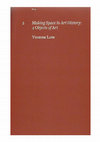
‘Making Space in Art History: 4 Objects of Art’ in ed. T.K. Sabapathy, Intersecting Histories: Co... more ‘Making Space in Art History: 4 Objects of Art’ in ed. T.K. Sabapathy, Intersecting Histories: Contemporary Turns in Southeast Asian Art (Singapore: Nanyang Technological University, 2012) 86-105.
This paper studies the germination of contemporaneity in art-making comparatively across Singapore and Indonesia, vis-a-vis a historical lens as a means to problematize the tenuous relationship between the art object and its concept across multiple modes of contemporaneity as they continue to intersect with the present. The objective is to present an integrated reading of four objects of art evoked and prompted by the theme and curatorial design of this exhibition, Intersecting Histories, within the trajectory of art history and to foreground the iconographical connections contemporary artworks have with preceding sources of art in developing intra-regional perspectives. Works studied include, Cheo Chai-Hiang's And Miles to go before I sleep, Dadang Christanto's Kekerasan I, Jim Supangkat's Ken Dedes, and Faizal Fadil's Study of 3 Thermos Flasks.
‘Cheo Chai-Hiang: Cash Convertor’, The 6th Asia Pacific Triennial of Contemporary Art, (Brisbane:... more ‘Cheo Chai-Hiang: Cash Convertor’, The 6th Asia Pacific Triennial of Contemporary Art, (Brisbane: Queensland Art Gallery, 2009)
‘Re-Introducing Ng Yat-Chuan: Right at Home’ in Right at Home: Drawings and Prints by Ng Yat-Chua... more ‘Re-Introducing Ng Yat-Chuan: Right at Home’ in Right at Home: Drawings and Prints by Ng Yat-Chuan (exhibition catalogue) (Singapore: National Institute of Education, 2009)
Reference books by Yvonne Low
Routledge Encyclopedia of Modernism, 2016
“Georgette Chen”, Routledge Encyclopedia of Modernism, London: Routledge, 2016.
Routledge Encyclopedia of Modernism, 2016
“The Nanyang Style”, Routledge Encyclopedia of Modernism, London: Routledge, 2016.


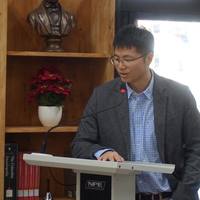



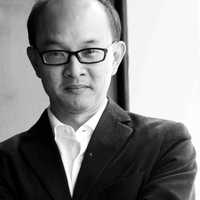
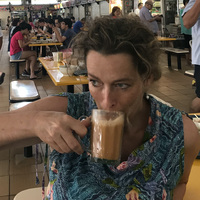

Uploads
Books and Edited Books by Yvonne Low
Chapter in Books by Yvonne Low
The problematic conceptualisation of a range of representations interpreted from the aesthetic practices of a group of emigre artists led their individual pursuits for innovation to be viewed as signifying hope for a consolidated identity in the emerging 'Malayan nation' and hope for a consolidated artistic school of painting in the emerging local art world. Their efforts were collectively viewed in most cases as representative of a Malayan style and at other times, as Nanyang style or Nanyang Feng'ge. Fundamentally, a Malayan identity was perceived from works which expressed multiculturalism while a Nanyang identity was perceived from works which expressed the sentiments of the tropics. Both identities have since lost currency in the present post-Independent Singapore nation.
Peer-reviewed Journal Essays by Yvonne Low
Open access: https://www.tandfonline.com/doi/full/10.1080/21500894.2024.2340070
This paper explores the rise of feminist consciousness among Indonesian women artists who, as a collective, contested against the restrictive terms on which women were to operate in the public sphere as professional artists. I argue that the active collaboration of women artists who struggled against the condition of peran ganda (double role) in the formation of Nuansa Indonesia, a collective that sought to promote professionalism in the exhibitory world by women, was unquestionably conducted in the spirit of feminism. This series of women-centred exhibitions marked one of the first steps toward understanding their conditions, and toward re-modelling the male-dominated Indonesian art world.
Yvonne Low (2015) Becoming Professional: Feminisms and the Rise of Women-Centred Exhibitions in Indonesia, Australian and New Zealand Journal of Art, 15:2, 210-224.
Papers by Yvonne Low
Catalogue Essays by Yvonne Low
This paper studies the germination of contemporaneity in art-making comparatively across Singapore and Indonesia, vis-a-vis a historical lens as a means to problematize the tenuous relationship between the art object and its concept across multiple modes of contemporaneity as they continue to intersect with the present. The objective is to present an integrated reading of four objects of art evoked and prompted by the theme and curatorial design of this exhibition, Intersecting Histories, within the trajectory of art history and to foreground the iconographical connections contemporary artworks have with preceding sources of art in developing intra-regional perspectives. Works studied include, Cheo Chai-Hiang's And Miles to go before I sleep, Dadang Christanto's Kekerasan I, Jim Supangkat's Ken Dedes, and Faizal Fadil's Study of 3 Thermos Flasks.
Reference books by Yvonne Low
The problematic conceptualisation of a range of representations interpreted from the aesthetic practices of a group of emigre artists led their individual pursuits for innovation to be viewed as signifying hope for a consolidated identity in the emerging 'Malayan nation' and hope for a consolidated artistic school of painting in the emerging local art world. Their efforts were collectively viewed in most cases as representative of a Malayan style and at other times, as Nanyang style or Nanyang Feng'ge. Fundamentally, a Malayan identity was perceived from works which expressed multiculturalism while a Nanyang identity was perceived from works which expressed the sentiments of the tropics. Both identities have since lost currency in the present post-Independent Singapore nation.
Open access: https://www.tandfonline.com/doi/full/10.1080/21500894.2024.2340070
This paper explores the rise of feminist consciousness among Indonesian women artists who, as a collective, contested against the restrictive terms on which women were to operate in the public sphere as professional artists. I argue that the active collaboration of women artists who struggled against the condition of peran ganda (double role) in the formation of Nuansa Indonesia, a collective that sought to promote professionalism in the exhibitory world by women, was unquestionably conducted in the spirit of feminism. This series of women-centred exhibitions marked one of the first steps toward understanding their conditions, and toward re-modelling the male-dominated Indonesian art world.
Yvonne Low (2015) Becoming Professional: Feminisms and the Rise of Women-Centred Exhibitions in Indonesia, Australian and New Zealand Journal of Art, 15:2, 210-224.
This paper studies the germination of contemporaneity in art-making comparatively across Singapore and Indonesia, vis-a-vis a historical lens as a means to problematize the tenuous relationship between the art object and its concept across multiple modes of contemporaneity as they continue to intersect with the present. The objective is to present an integrated reading of four objects of art evoked and prompted by the theme and curatorial design of this exhibition, Intersecting Histories, within the trajectory of art history and to foreground the iconographical connections contemporary artworks have with preceding sources of art in developing intra-regional perspectives. Works studied include, Cheo Chai-Hiang's And Miles to go before I sleep, Dadang Christanto's Kekerasan I, Jim Supangkat's Ken Dedes, and Faizal Fadil's Study of 3 Thermos Flasks.
This panel aims to explore modernist developments in relation to the rise of new actors during times of political transitions in three closely related Southeast Asian countries: Cambodia, Indonesia and Thailand. Often, the work of the artists cannot be viewed in isolation from networks of patronage, and especially from state patronage, as emerging nations struggle to define cultural and national identities. The papers in this panel aim to re-evaluate historiographical and curatorial discourses of modern art in Southeast Asia by reconsidering the impact that patronage had on formalizing and legitimizing the " work " of artists and the cultural productions of its time.
This paper aims to recover the background to the post-Second World War growth of local art activities, art education and the rise of the professional artist on the island of Singapore and peninsular Malaya – and in so doing, recover and clarify women’s participation and involvement in the widening public sphere. It examines how the transitional period spanning the dissolution of British colonialism and the establishment of two independent nations stimulated unique conditions that underscored the development of art education which was in line with the rise of a sense of responsibility for building a national culture. In sketching out this enlarged public sphere, which saw unprecedented popular participation, this paper argues that activities conducted by both male and female artists were increasingly positioned along an amateur-professional divide. It is interested in exploring how such developments have led to gender disparity in the professional activity of art.
In 2012, Singapore’s pre-eminent art historian, T.K. Sabapathy curated the show, Intersecting histories: Contemporary turns inSoutheast Asian art, in which canonical works from four Southeast Asian countries were shown with the intention to generate new research and perspectives on the works in the context of Southeast Asian art and art historiography. By locating the exhibition strategically in a university gallery, the show’s strong pedagogical tenor prompted and motivated investigation into the issue of consecration and gave the Singaporean audience the rare opportunity to examine the reification of select artworks and the works’ collection and exhibition history. Though this exhibition was merely one of several in the last decade to contextualiseSoutheast Asian modern and contemporary art, it was likely the first such exhibition (and scholarly publication) to reflect upon Singapore’s long history of institutional support for Southeast Asian art (which to date has the largest Southeast Asian collection of modern and contemporary art in the region) in relation to its wider historical and political connections with her Southeast Asian neighbours. This paper takes up some of the exhibition (and publication)’s key propositions with the aim to re-evaluate Singapore’s mostly political interest in and culturally ambivalent attitudes toward establishing itself as a cultural leader in the field of Southeast Asian modern and contemporary art. Using the exhibition Intersecting histories as a point of departure, it will examine the seminal role key institutions in Singapore have historically played in the shaping, disseminating and the institutionalization of a “Southeast Asian art”.